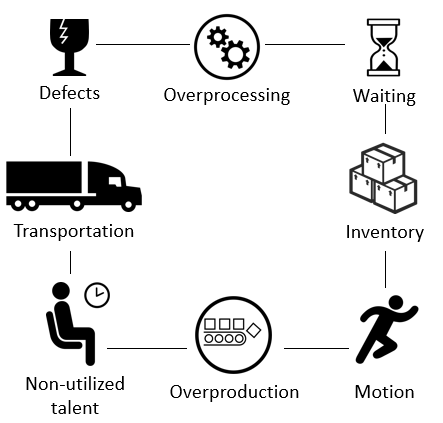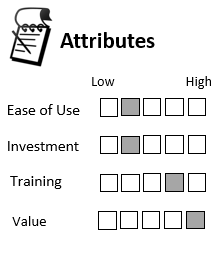In Lean, waste is defined as activities or entities that can be removed from the workflow stream without impacting its productivity negatively.
Identifying and eliminating waste is the starting point for continuous improvement. Once the types of waste are understood clearly, the company can focus on optimizing their processes by eliminating waste from these processes.
Application
The goal of process improvement is to identify and remove all forms of waste from a process in order to increase efficiency, reduce cost and optimize stakeholder value. Waste is any step in a process that is not required to complete a process (Non-Value-Adding) successfully. When waste is removed, only the steps that are required (Value-Adding) to deliver a satisfactory product or service to the customer remain in the process.
8 Types of Waste

Best Practices
- Clarify operating procedures and specifications to ensure waste-free processes.
- Reduce large batches.
- Use value stream mapping and process mapping to identify and eliminate waste.
Process
“If your customer wouldn’t pay for it, it’s waste.”
The overall process for identifying and removing waste is to eliminate any process, activity, or practice that does not result in more value for the customer. To identify wastes, use Value Stream Mapping (VSM) to document instances of the waste in the processes, then develop a plan for eliminating or reducing them. By streamlining the entire process, the production flow can proceed without interruption.
Do
- Ensure that employees are actively involved in their processes by encouraging them to take ownership.
- Identify what is needed and why, then remove extra steps, efforts and processes that add no value.
Don’t
- Consider the process for identifying and eliminating waste s a one-time action.
- Exclude your frontline workers and their input for process improvement.
Business Drivers
- Reducing the amount of work required to perform tasks.
- More efficient business processes.
- Increasing value for customers.
- Improving competitiveness within the industry.
Benefits
- Increase productivity and efficiency.
- Improve operational performance.
- Reduce cost and increase profits.
- More satisfied customers.
- Inventory reductions.
- Increase workspace utilization.
- Reduce lead time for orders.

Complementary Methods
- Value Stream Mapping (VSM)
- 5S
- Gemba Walk
- Ohno Circle
- Spaghetti Diagrams
Resources
- Book: Lean Thinking: Banish Waste and Create Wealth in Your Corporation, by Womack and Jones.
- Book: Transforming Design and Construction: Chapter on Waste
- Jobsite Poster: 8 Wastes Jobsite Poster